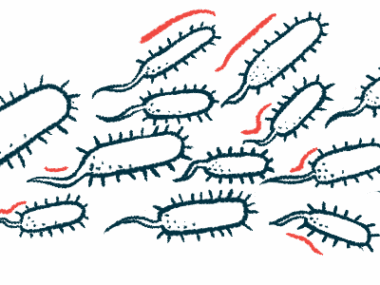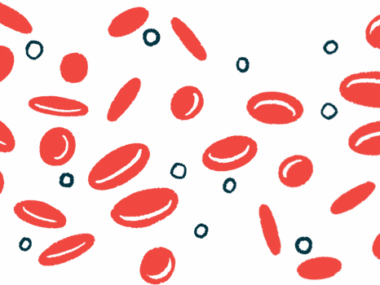Man develops CAD as complication of pancreatic cancer in rare case
'Early investigation' key with any signs of autoimmune hemolytic anemia
Written by |

A U.S. man in his 60s developed cold agglutinin disease (CAD) as a rare complication of advanced pancreatic cancer, a case study reports.
While CAD has been increasingly found to occur secondary to blood cancers, it is rarely associated with solid tumors. That may make treatment challenging because the usual approaches to treating the autoimmune blood disorder may not work as well, according to the researchers.
“We report this case to highlight its rarity and to demonstrate the importance of early investigation of patients whose clinical presentation is suggestive of autoimmune haemolytic anaemia, especially if there is no obvious underlying [cause],” the scientists wrote.
The case report, “Cold Agglutinin Disease in the Setting of Pancreatic Adenocarcinoma,” was published in the European Journal of Case Reports in Internal Medicine by a research team from Michigan.
Autoimmune hemolytic anemia, or AIHA, is a group of conditions marked by the production of self-reactive antibodies that wrongly bind to red blood cells and mark them for destruction — a process called hemolysis.
Secondary CAD increasingly found in blood cancer patients
CAD is a form of AIHA in which these antibodies act at temperatures below the normal body range. It can occur either without a known cause, when it’s called primary CAD, or secondary to an infection or cancer — and then known as secondary CAD.
Diseases and manifestations triggered by the body’s immune response against cancer, or the cancer-related production of certain substances, are called paraneoplastic syndromes. CAD and other forms of AIHA have been reported as paraneoplastic syndromes of certain blood cancers, and less frequently, of solid cancers.
Here, a team of researchers at Western Michigan University in Kalamazoo described the case of a 65-year-old man who developed CAD as a paraneoplastic syndrome of pancreatic cancer.
The man, who had no previous health problems, was admitted to the emergency department complaining of shortness of breath, weakness, and lack of energy. He reported losing 9 kg (about 20 pounds) unintentionally, as well as constipation and pale, greasy stools for the previous month.
A week before, he had gone to urgent care for painful, slow urination. His legs were swollen, and he had blood and excess protein in the urine.
Man found to have pancreatric cancer that had spread
Blood tests at the researchers’ hospital revealed high levels of the enzyme lactate dehydrogenase and the yellowish pigment bilirubin, both markers of hemolysis. Low levels of hemoglobin, the protein that carries oxygen in red blood cells, were also found.
The man also had high blood levels of lipase, an enzyme that breaks down fats, which can be an indicator of pancreatic cancer. A CT scan of his abdomen suggested the presence of cancer of the pancreas that had already spread to other parts of the body. No solid mass was observed in the head of the pancreas, so a tissue sample was not taken.
Still, the man’s blood had high levels of CA 19-9 and carcinoembryonic antigen, two markers of pancreatic cancer, further confirming the malignancy.
Meanwhile, a direct Coombs test, which detects antibodies and other immune proteins bound to red blood cells, came back positive, and the man also tested positive for cold agglutinins, the self-reactive antibodies that drive CAD.
Based on these findings, and the exclusion of other possible causes, the doctors considered that the man’s CAD was likely a paraneoplastic syndrome of his pancreatic cancer.
While linking AIHA [autoimmune hemolytic anemia, a group of conditions that includes CAD] to solid organ tumours is a diagnosis of exclusion, these investigations are necessary for early identification and treatment to help improve quality of life, and hinder mortality.
He was given a warmed blood transfusion, intravenous immunoglobulin (IVIG), and rituximab for treatment of CAD. IVIG delivers healthy antibodies, with the aim of neutralizing self-reactive antibodies, while rituximab (sold as Rituxan and others) works by killing antibody-producing immune cells.
However, the man did not respond to treatment, showing persistently low hemoglobin levels and high levels of hemolysis markers.
Three weeks later, the man was readmitted for severe malnutrition. A pancreas biopsy, which removes a piece of tissue for examination, confirmed advanced pancreatic cancer that had spread to other parts of the body.
The man’s condition worsened, and he developed abdominal swelling needing fluid drainage, kidney blockage, and a blood clot in a major vein. Chemotherapy was not recommended due to his poor condition, and he entered hospice, dying five days later.
“This case report highlights the difficulty of treating AIHA in the setting of comorbidities [simultaneous conditions], suggesting that standard treatment guidelines may not be effective,” the researchers wrote as one of three learning points in their report.
The team concluded that, “while linking AIHA to solid organ tumours is a diagnosis of exclusion, these investigations are necessary for early identification and treatment to help improve quality of life, and hinder mortality.”







